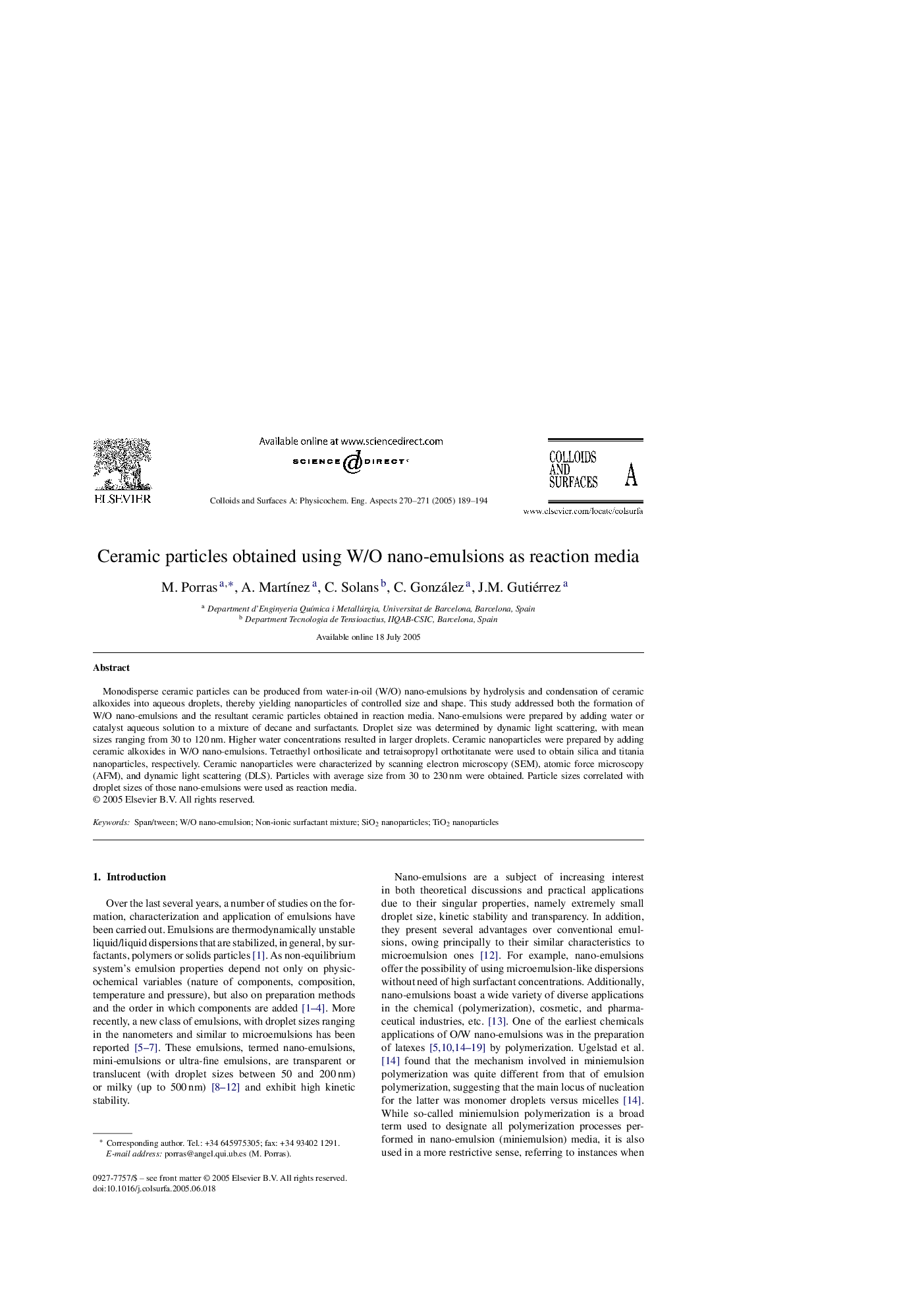| Article ID | Journal | Published Year | Pages | File Type |
|---|---|---|---|---|
| 9675540 | Colloids and Surfaces A: Physicochemical and Engineering Aspects | 2005 | 6 Pages |
Abstract
Monodisperse ceramic particles can be produced from water-in-oil (W/O) nano-emulsions by hydrolysis and condensation of ceramic alkoxides into aqueous droplets, thereby yielding nanoparticles of controlled size and shape. This study addressed both the formation of W/O nano-emulsions and the resultant ceramic particles obtained in reaction media. Nano-emulsions were prepared by adding water or catalyst aqueous solution to a mixture of decane and surfactants. Droplet size was determined by dynamic light scattering, with mean sizes ranging from 30 to 120Â nm. Higher water concentrations resulted in larger droplets. Ceramic nanoparticles were prepared by adding ceramic alkoxides in W/O nano-emulsions. Tetraethyl orthosilicate and tetraisopropyl orthotitanate were used to obtain silica and titania nanoparticles, respectively. Ceramic nanoparticles were characterized by scanning electron microscopy (SEM), atomic force microscopy (AFM), and dynamic light scattering (DLS). Particles with average size from 30 to 230Â nm were obtained. Particle sizes correlated with droplet sizes of those nano-emulsions were used as reaction media.
Keywords
Related Topics
Physical Sciences and Engineering
Chemical Engineering
Colloid and Surface Chemistry
Authors
M. Porras, A. MartÃnez, C. Solans, C. González, J.M. Gutiérrez,
